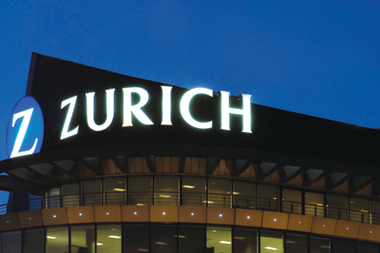More insurer mergers and acquisitions are expected in the next few years, but how will this affect the insurance buying market?

Risk managers will be waiting keenly to hear further news of another insurer merger on 25 August. It is on this date that Zurich will confirm a bid to buy rival insurer RSA or announce a withdrawal.
News emerged last month that the Swiss-based Zurich Insurance Group was “evaluating a possible offer” to buy UK-based insurer RSA. At the time of this announcement, Zurich said no firm offer had been made but that the group was looking at the possibility of acquiring its rival, worth an estimated £5.5bn, according to StrategicRISK’s sister title Insurance Times.
This announcement follows a long list of recent merger and acquisition activity. The most recent merger involved Willis and Towers Watson. The two entities will come together in a $18bn (€16bn) deal. Then ACE bought Chubb for €25.3bn. Others M&As include HCC and Tokio Marine, Brit and Fairfax, Catlin and XL, Montpelier Re and Endurance, and Allied World’s purchase of RSA’s Hong Kong and Singapore operations.
Experts say the key drivers of these deals include a softening rating environment, low investment yields, a globalisation of client needs, Solvency II and the opportunity for cost savings. However, the drivers differ from insurer to broker.
“Both are looking to save costs through consolidation of back offices, but brokers are looking to achieve growth through expanding their range and scope of offerings (for example, Willis), while insurers are looking for scale to retain more risk for the capital they have available,” says Airmic chief executive John Hurrell.
Market impact
But what does this outbreak of activity mean for risk managers and insurance buyers in Europe?
“We are unlikely to see a major merger of large global broker competitors. More likely we will see niche and geographic expansions, which should have little negative impact (and just possibly, a positive impact) on buyers,” says Hurrell.
Colin Campbell, head of risk and compliance at fashion retailer Arcadia Group UK, anticipates other outcomes. “There may be slight competition removal – and hence a nudge to higher rates – but rate rises seem to be in the distance and there is still healthy competition and lots of capital,” he says.
Hurrell adds that in short term, the mergers are unlikely to have an adverse effect on buyers, but market conditions could change if M&A activity continues in the near future. “In the short term, I do not think the corporate activity will negatively impact on buyers due to the continued level of competition. Indeed, some of the players not currently involved in these mergers are seeing an opportunity to take advantage of this period of distraction for those companies involved in mergers,” he says.
“If the current mergers were the last in the present round, there would be no longer term impact on buyers. However, that is unlikely and we are probably going to see more significant insurer mergers over the next 12 months. If this coincided with a major catastrophic event in excess of €70bn, we might see a flattening or even a slight hardening of the market.”
Waves of activity
Carl Leeman, chief risk officer at Luxembourg-based international logistics service provider and port operator Katoen Natie, also expects further mergers.
“We had the first wave of insurer M&As a few years ago, where small but client-friendly and flexible insurers disappeared from the market because of Solvency II,” he says. “Now, we are experiencing another wave, whereby the bigger players are merging with each other.
“Also, what we see is that some insurers will have expertise in certain lines of business that other players don’t. By merging with another company, the insurer will immediately get a big chunk of business that they were not active in before.”
Indeed, M&A activity is not expected to slow any time soon. According to a recent survey conducted by Towers Watson, 51% of insurance executives expect merger activity to pick up over the coming three years, compared with only 4% in 2013.
In another survey, by EY, almost two-thirds of executives expect overall deal volumes to increase further in 2015, with 40% of businesses actively intending to pursue acquisitions. Only time will tell what the most recent two deals mean for the insurance industry in Europe. But with opportunities for organic growth still limited around the world, it’s unlikely that this is the end of the renewed interest in M&A activity.




















No comments yet